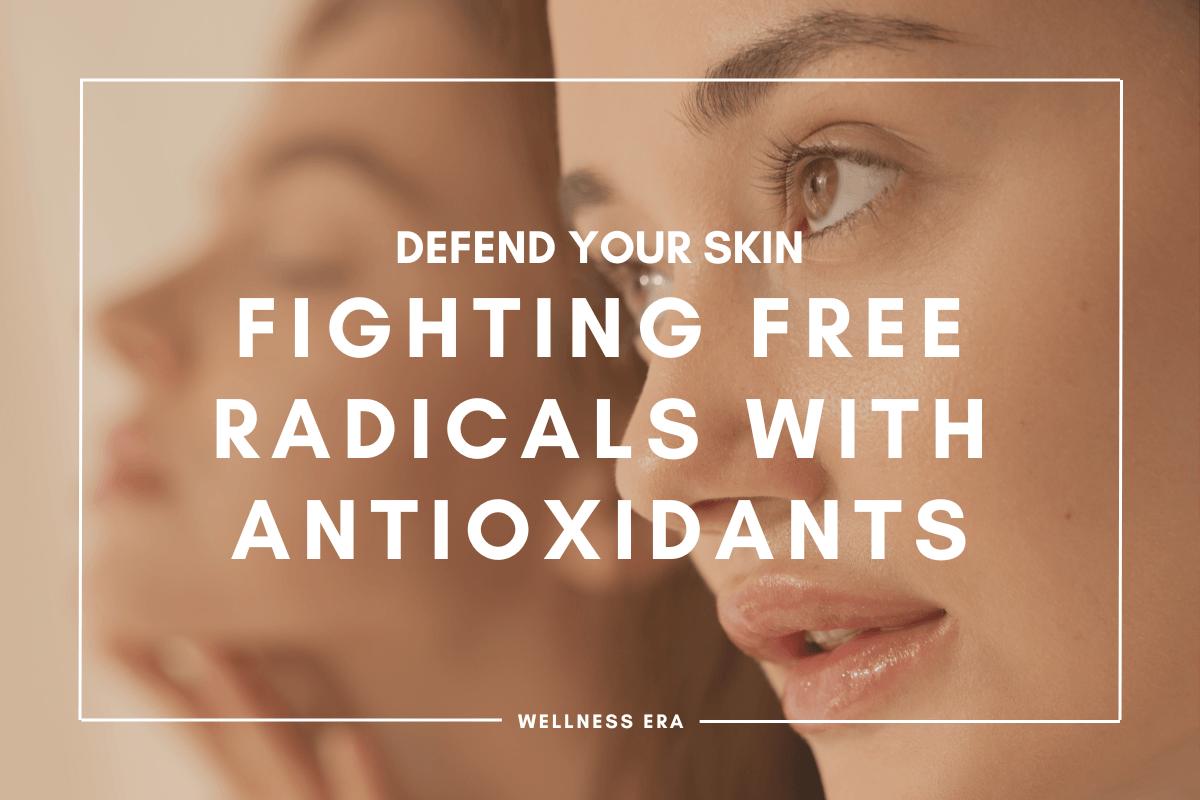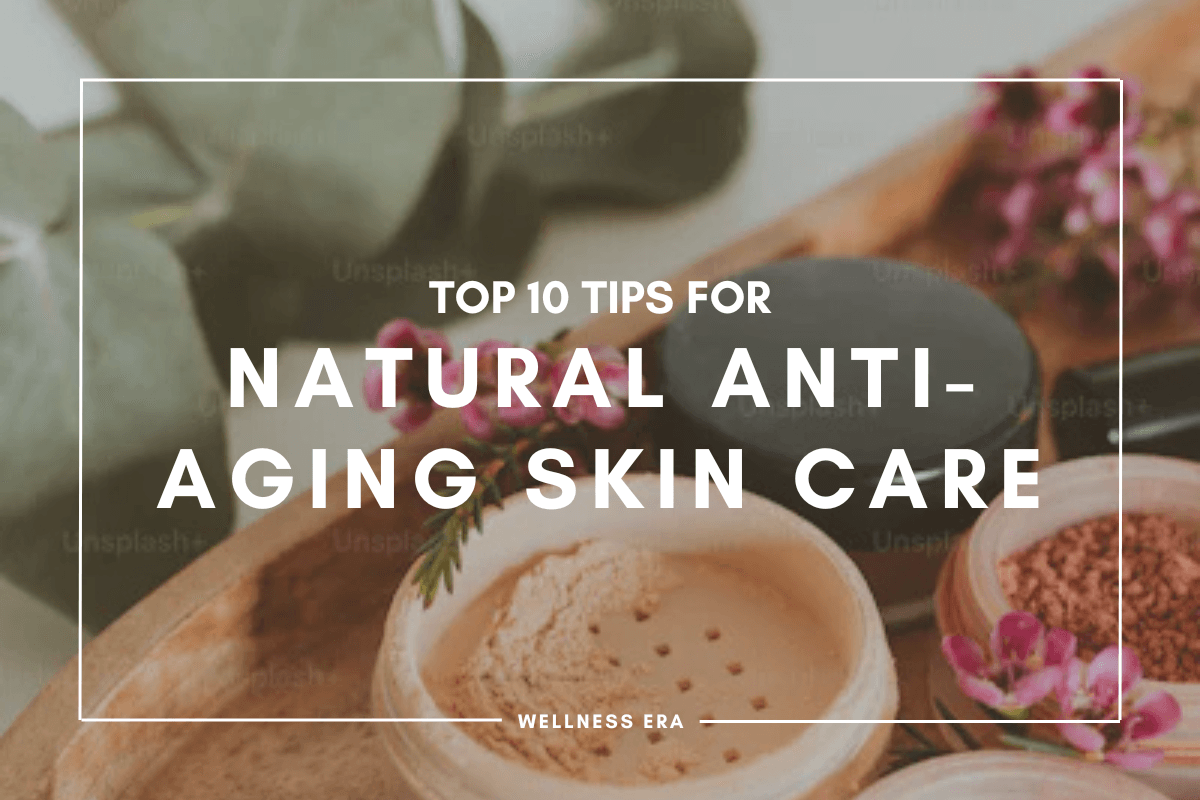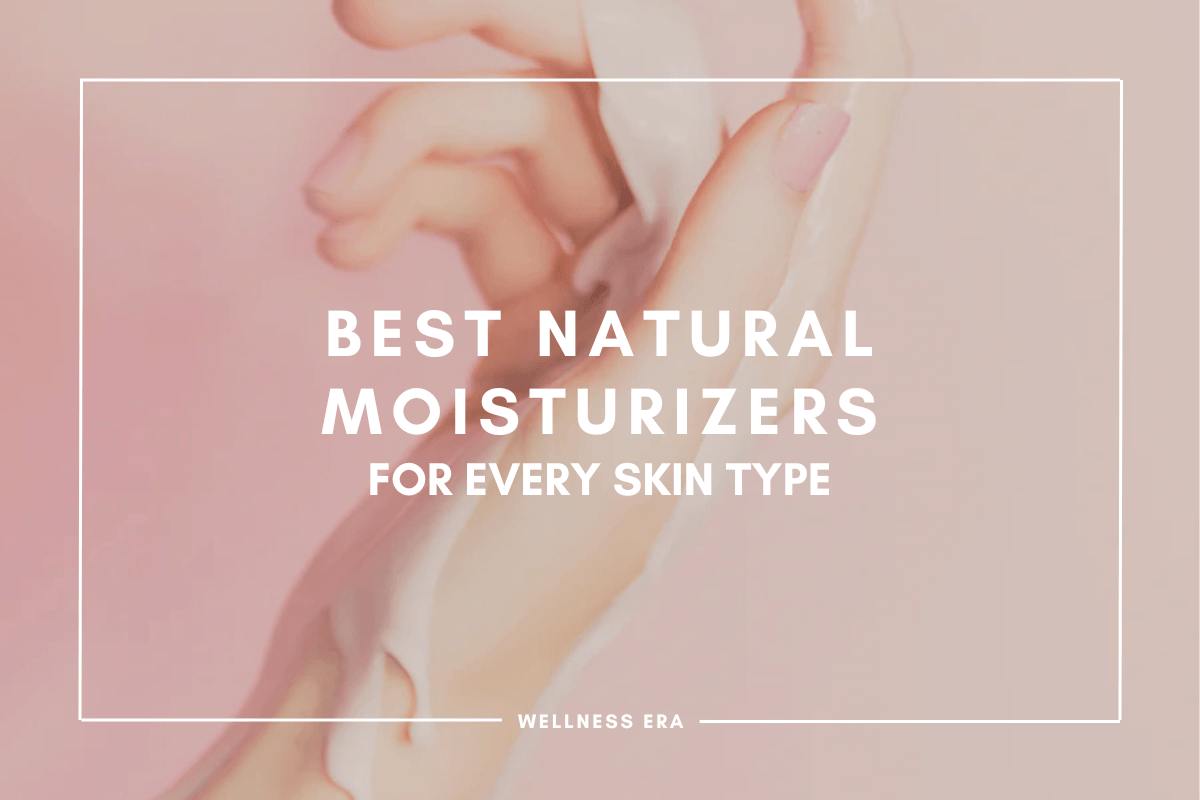Protect Your Skin from UV Radiation and Environmental Damage Naturally
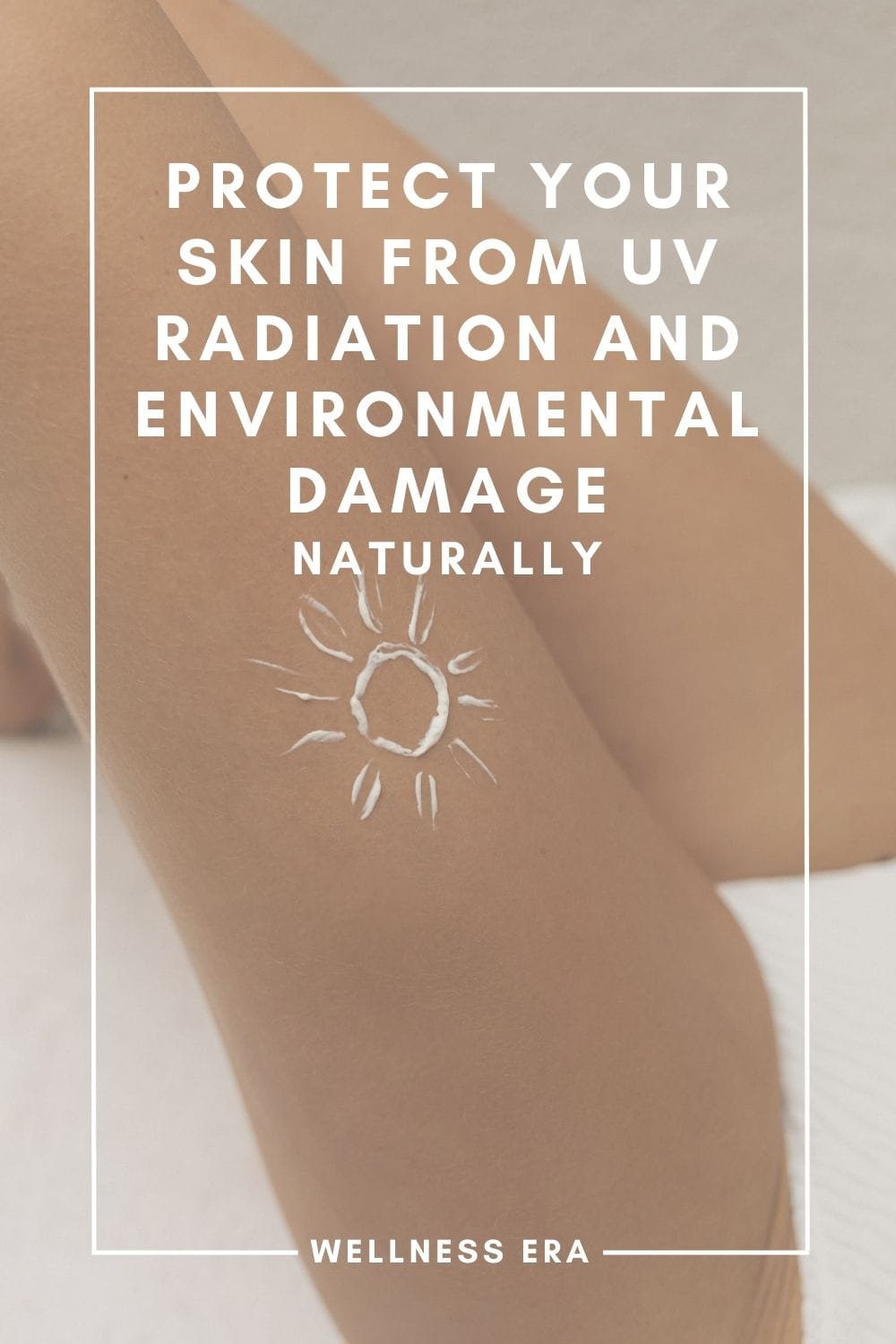

Sun exposure is one of the most significant factors in premature aging, contributing to wrinkles, dark spots, and loss of skin elasticity. Protecting your skin from harmful UV radiation is crucial to maintain a youthful complexion. Incorporating natural sun protection into your daily routine is not only essential for anti-aging but also aligns with toxin-free, holistic skincare.
Sun Protection: The Most Important Natural Remedy against aging skin
Sunlight provides essential benefits like boosting vitamin D levels, but too much of it can accelerate the skin’s aging process. UV radiation breaks down collagen, weakens skin elasticity, and contributes to fine lines, wrinkles, and hyperpigmentation. By incorporating natural sun protection strategies, you can shield your skin from premature aging and environmental damage.
Natural Sunscreens for Aging Skin
When it comes to sun protection, choosing the right sunscreen is key. Natural sunscreens that contain mineral-based ingredients like zinc oxide and titanium dioxide are excellent options for aging skin. These ingredients create a physical barrier on the skin, reflecting UV rays away from the skin, rather than absorbing them like chemical sunscreens do. Plus, they are gentle on sensitive or aging skin, making them ideal for daily use.
Zinc Oxide: A powerful natural ingredient that provides broad-spectrum protection against both UVA and UVB rays. Zinc oxide reflects the sun’s rays, preventing them from penetrating the skin and causing damage (Schalka et al., 2012).
Titanium Dioxide: Another mineral that works similarly to zinc oxide by physically blocking UV rays from reaching the skin. It's lightweight and easy to apply, making it a great option for daily sun protection (Petersen & Wulf, 2014).
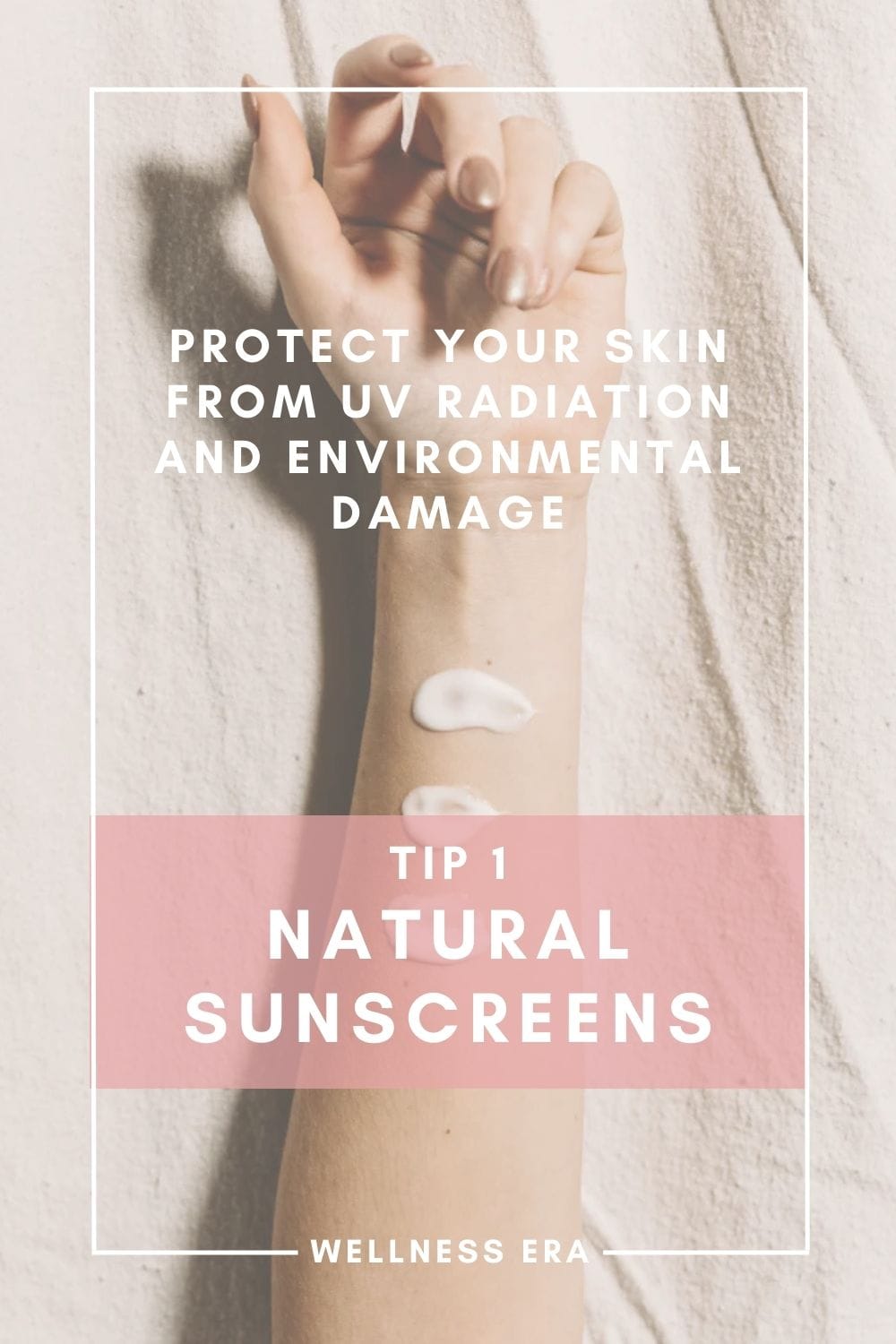
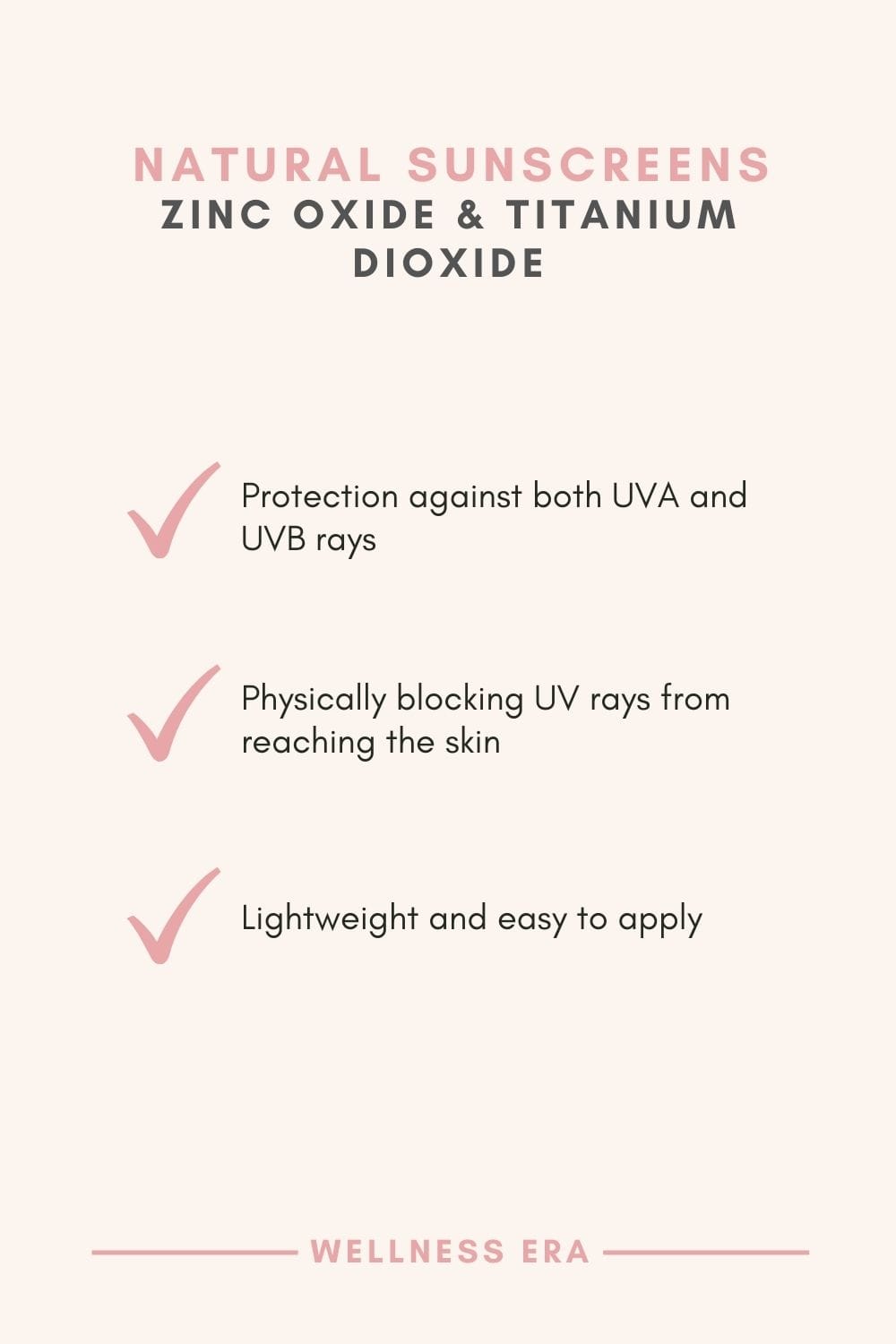
Opting for a natural sunscreen ensures that you’re protecting your skin from harmful rays without exposing yourself to harsh chemicals found in many commercial sunscreens. Look for products labeled with non-nano zinc oxide or titanium dioxide for the most effective and safest protection.
Protective Clothing and Hats
Beyond sunscreen, your wardrobe can be one of the best defenses against UV damage. Physical barriers like wide-brimmed hats, sunglasses, and breathable natural fabrics can protect your skin from sun exposure and keep your complexion healthy and youthful.
Wide-Brimmed Hats: A wide-brimmed hat is an excellent way to shield your face, neck, and shoulders from direct sunlight. By wearing a hat with a wide brim, you can block a significant amount of UV radiation, reducing the risk of sun damage and helping to maintain youthful skin (Gies et al., 2009).
Natural Fabrics for Sun Protection: Fabrics like linen, hemp, and organic cotton are not only breathable and sustainable but also offer excellent sun protection. These natural fibers provide a physical barrier between your skin and the sun, especially when tightly woven or in darker shades (Whiteman et al., 2019).
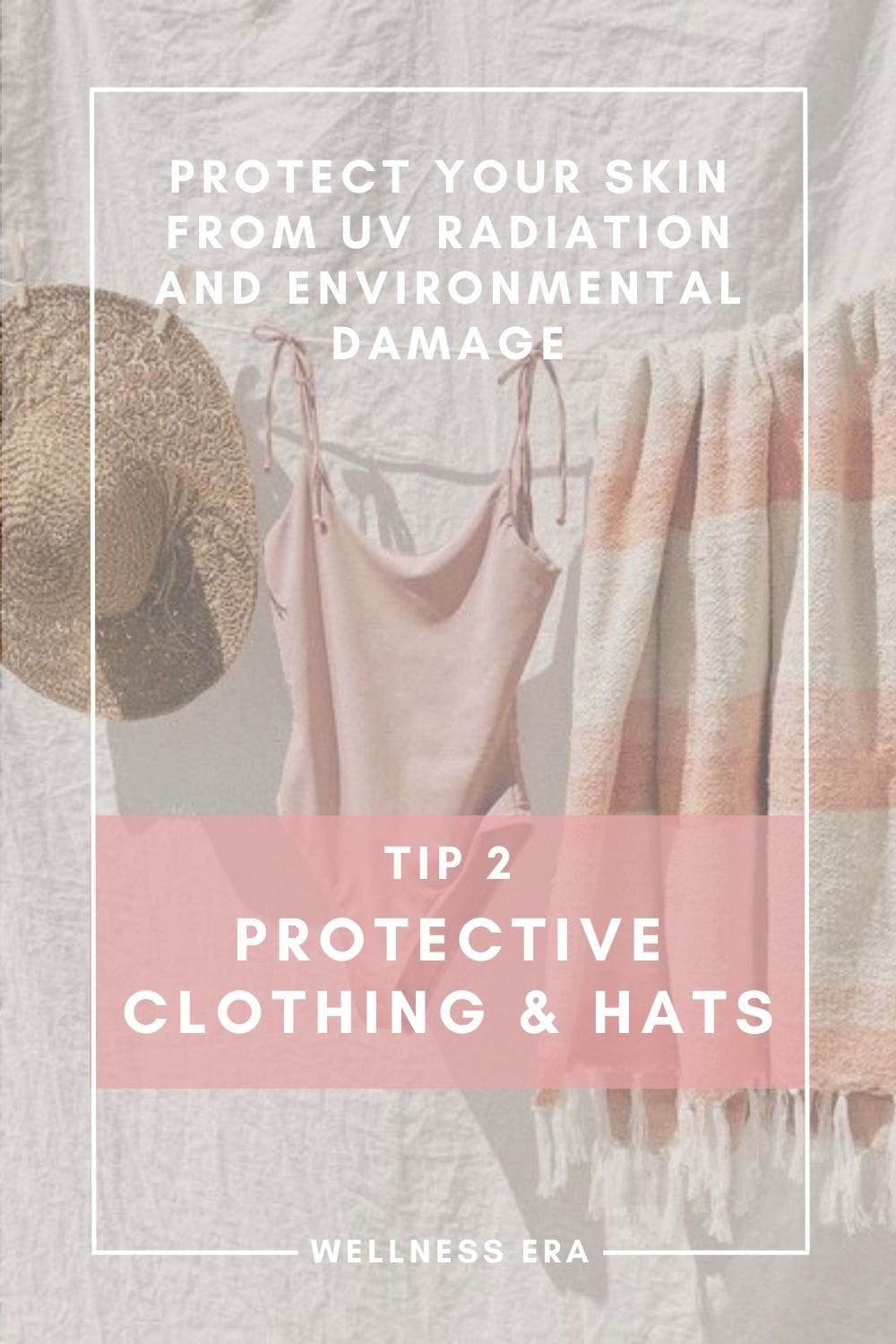
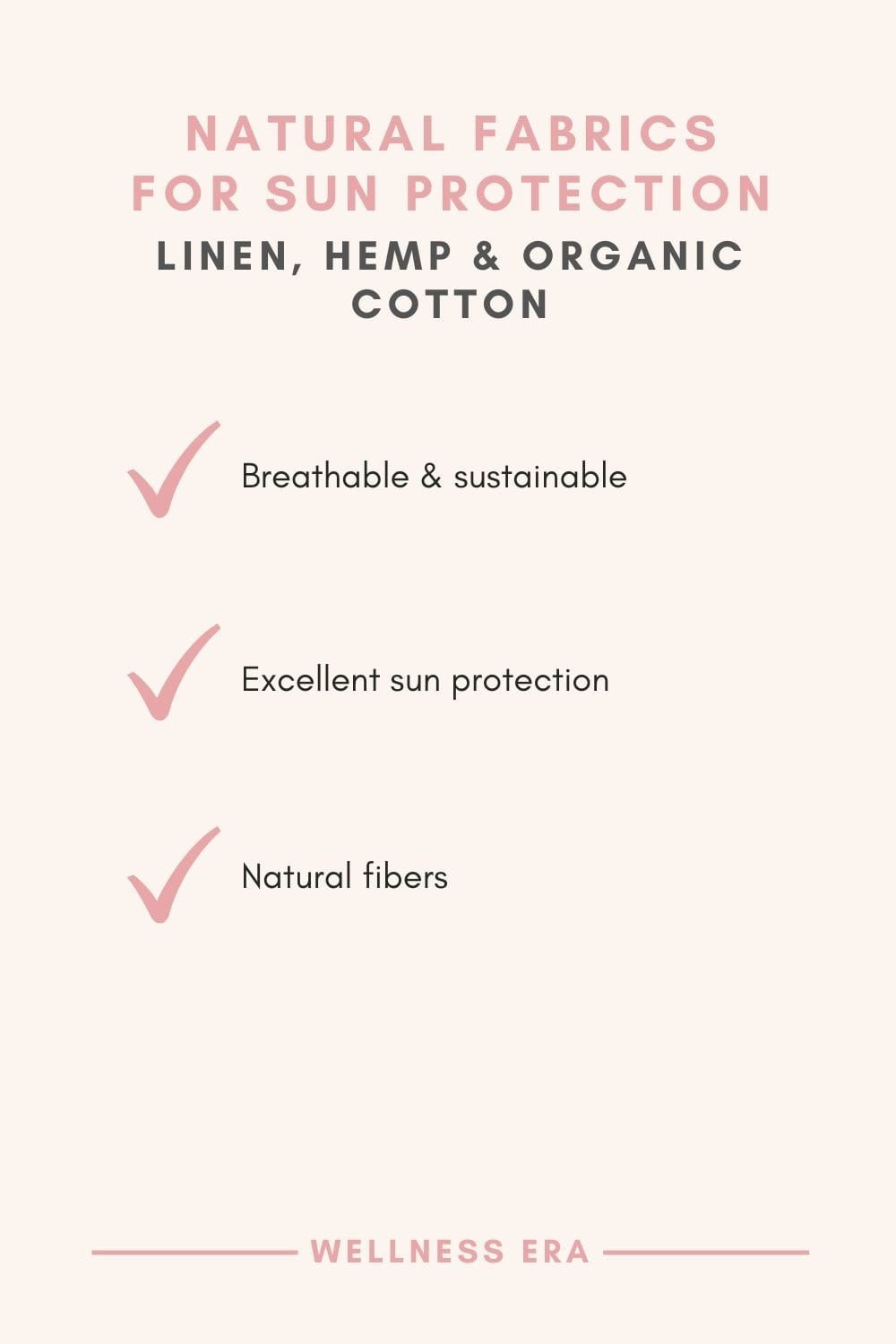
By incorporating UV-protective clothing into your routine, you can naturally safeguard your skin against the sun’s harmful effects while remaining stylish and comfortable.
Seek Shade and Use Sun Barriers
In addition to sunscreen and protective clothing, avoid direct sun exposure during peak UV hours, usually between 10 a.m. and 4 p.m. If you need to be outdoors, seek shade under trees, umbrellas, or awnings to minimize exposure to harmful rays. Using UV index apps can help you monitor when sun exposure is safest and adjust your activities accordingly (O’Hagan et al., 2016).
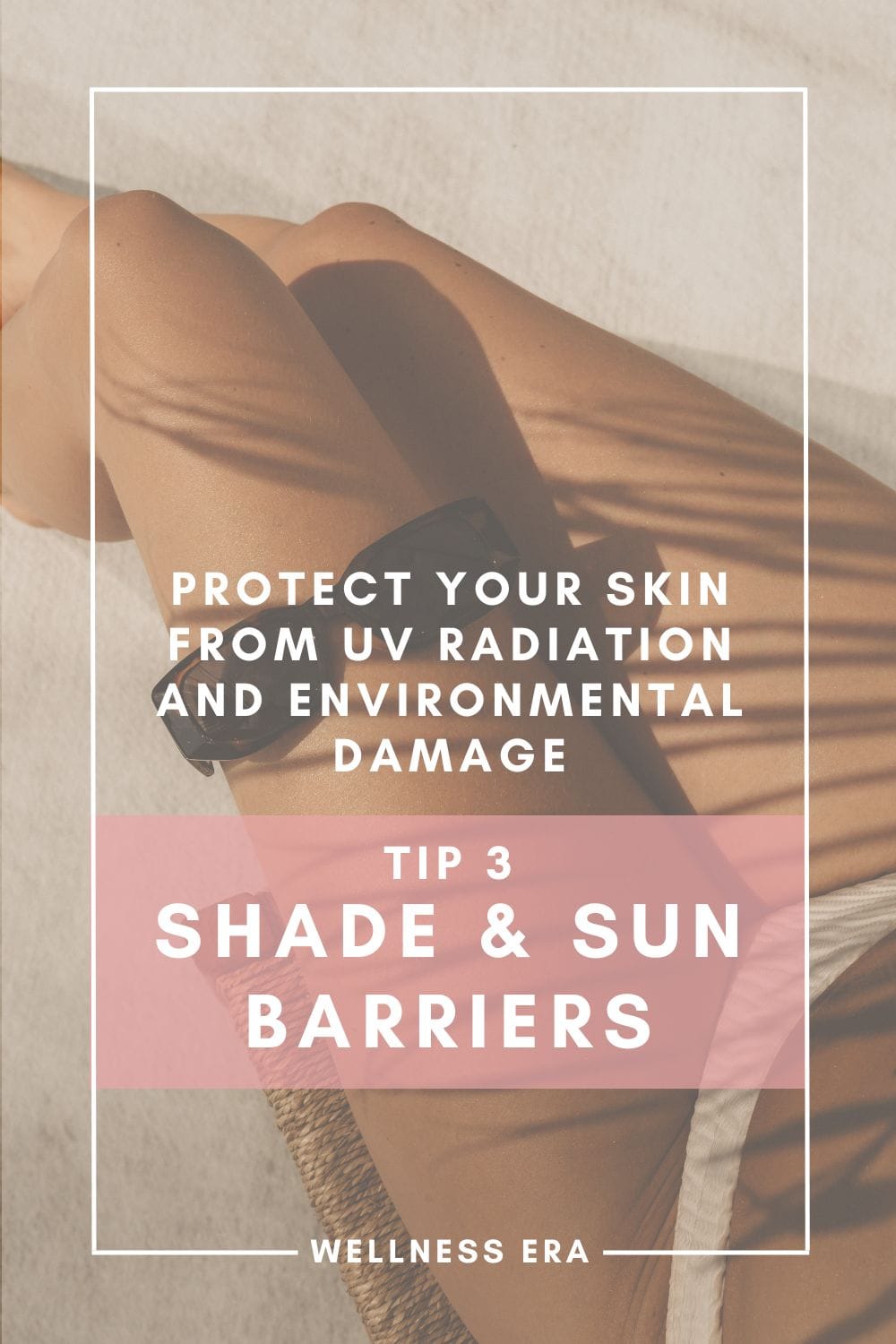
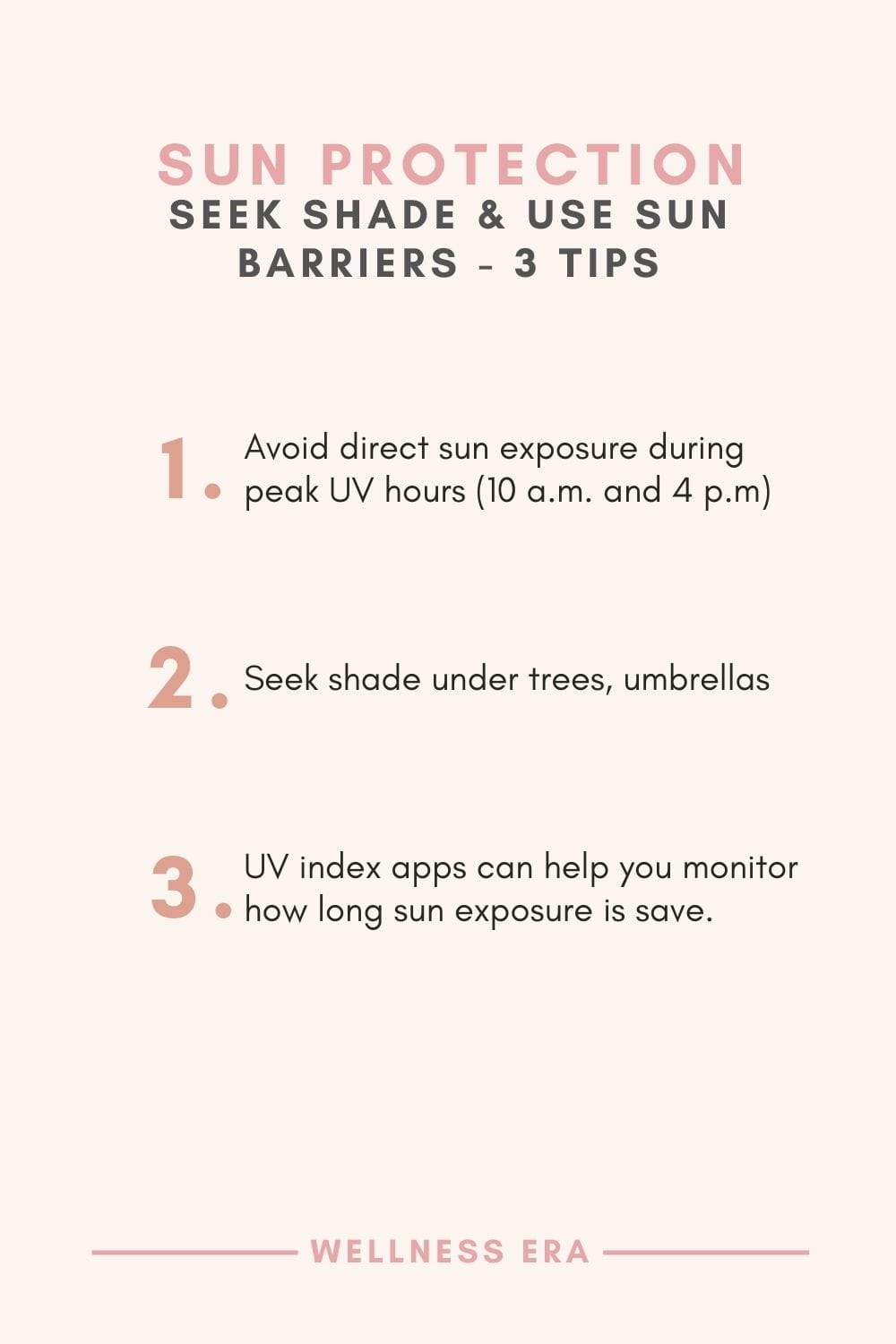
Can Natural Oils Protect Your Skin from UV Damage?
While natural oils cannot fully replace sunscreen, some have natural SPF properties that provide mild protection from UV rays. Rich in antioxidants and essential fatty acids, these oils help defend the skin against free radical damage caused by sun exposure. Although a few oils show slight UV-blocking abilities, it's critical to understand that they should not be used as a substitute for broad-spectrum sunscreen, as their SPF levels are typically low and insufficient for prolonged sun exposure (Korać & Khambholja, 2011).
While natural oils offer some antioxidant protection, understanding how antioxidants work can further elevate your skincare routine.Discover how antioxidants can defend your skin against free radical damage for lasting radiance.
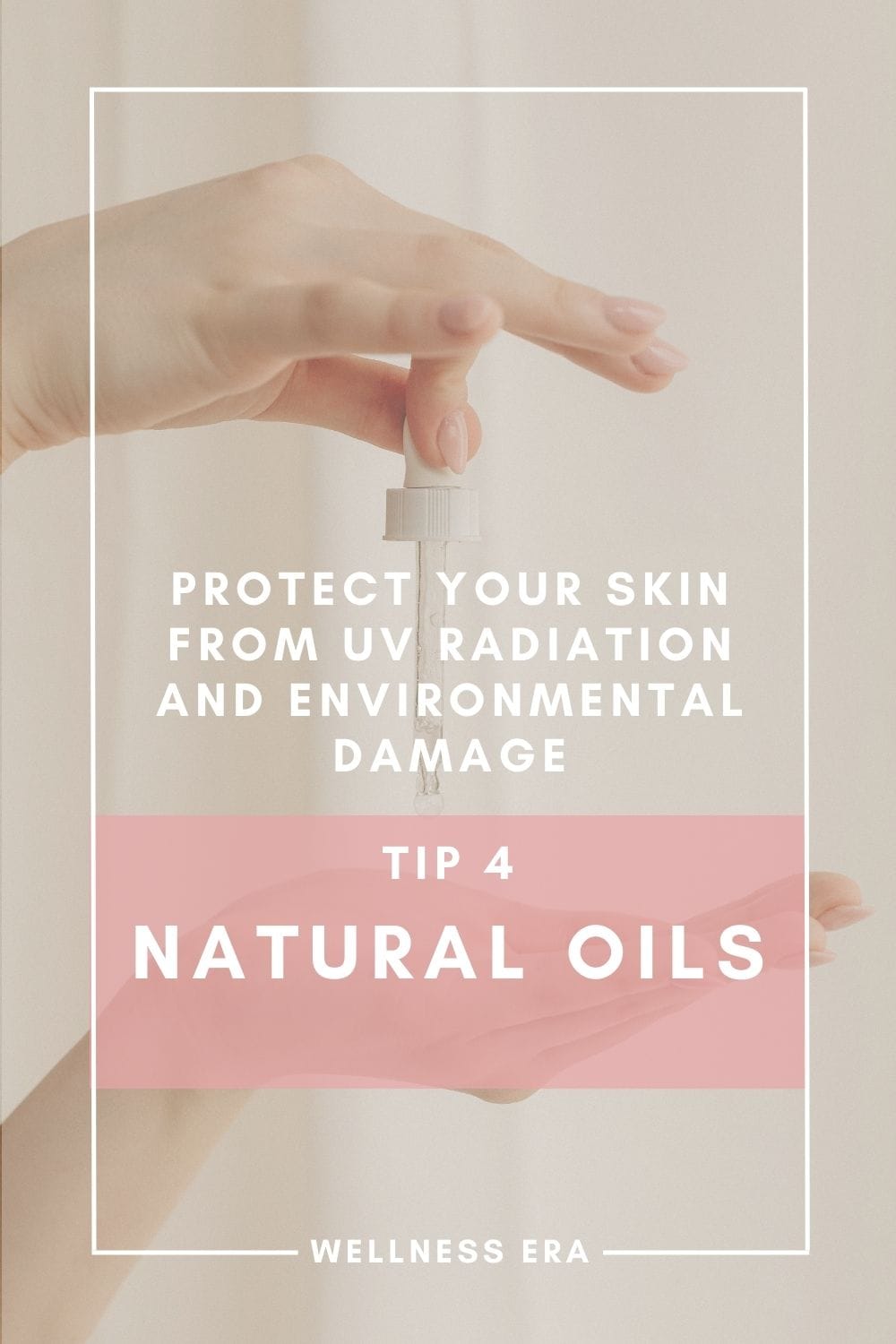
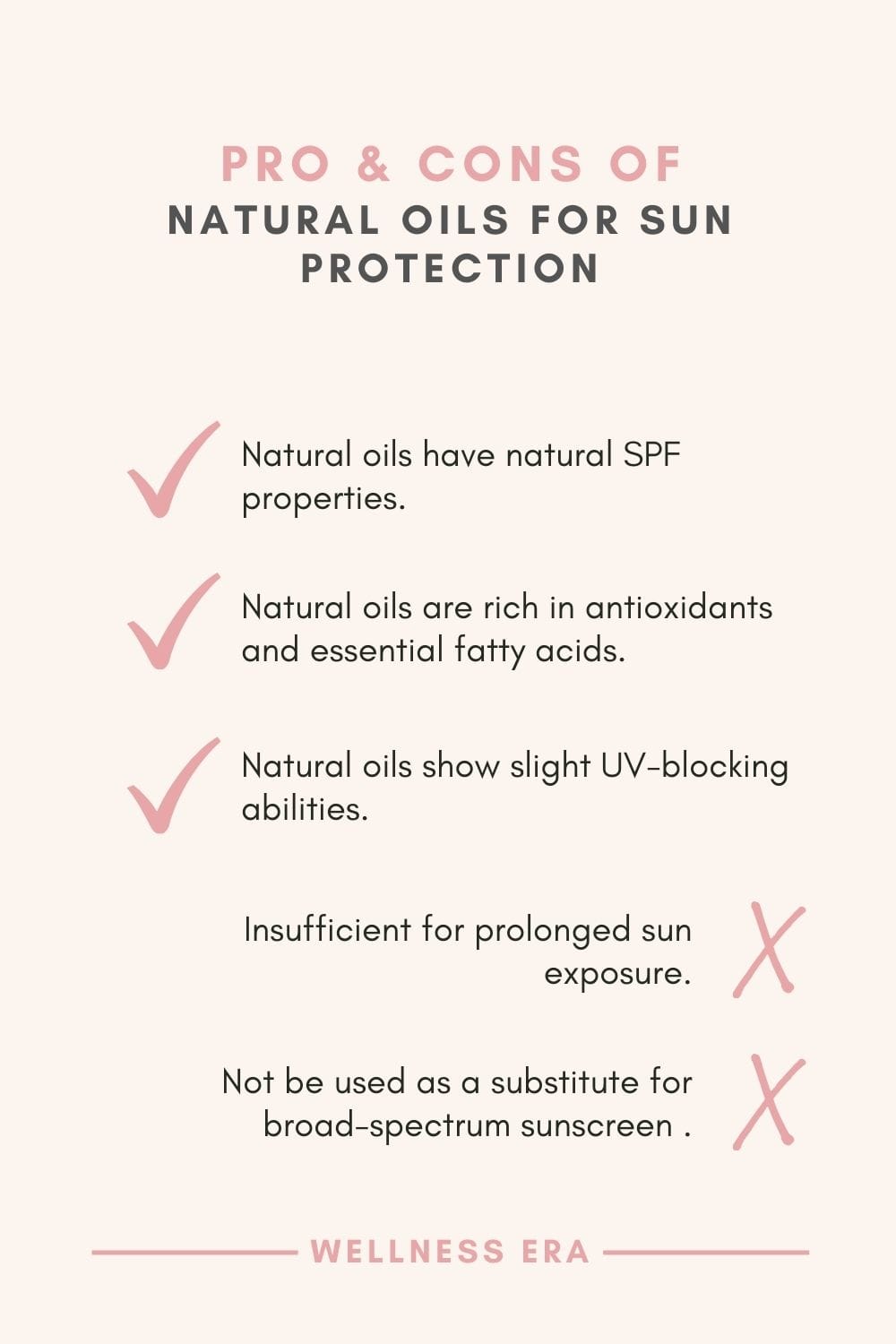
Oils with Natural SPF and Sun-Protective Qualities
Raspberry Seed Oil
SPF Range: Estimated SPF between 28-50 (results can vary, and research is ongoing).
Properties: Raspberry seed oil is abundant in vitamin E and omega fatty acids (omega-3 and omega-6) with potent antioxidant effects. These properties help to counteract free radicals and provide mild protection against UVA and UVB rays (Oomah et al., 2000).
Best Use: Apply a few drops to your daily moisturizer for added antioxidant support, but remember it is not a replacement for sunscreen.
Carrot Seed Oil
SPF Range: Estimated SPF of 35-40 (not standardized and requires further validation).
Properties: Carrot seed oil is packed with beta-carotene, vitamin A, and antioxidants that protect the skin from environmental stress. While it exhibits some UV-blocking potential, additional evidence is needed to confirm its efficacy as a standalone SPF (Dweck, 2000).
Best Use: Ideal as a serum booster beneath regular sunscreen, enhancing your skin's defense against environmental stressors.
Wheat Germ Oil
SPF Range: Estimated SPF around 20.
Properties: Known for its high vitamin E content and antioxidant richness, wheat germ oil is beneficial for repairing sun-damaged skin and combating free radicals. Its natural SPF levels are mild and not sufficient for complete UV protection (Kaur & Saraf, 2011).
Best Use: Apply sparingly in your daily skincare routine, especially on mature or dry skin for extra nourishment and repair.
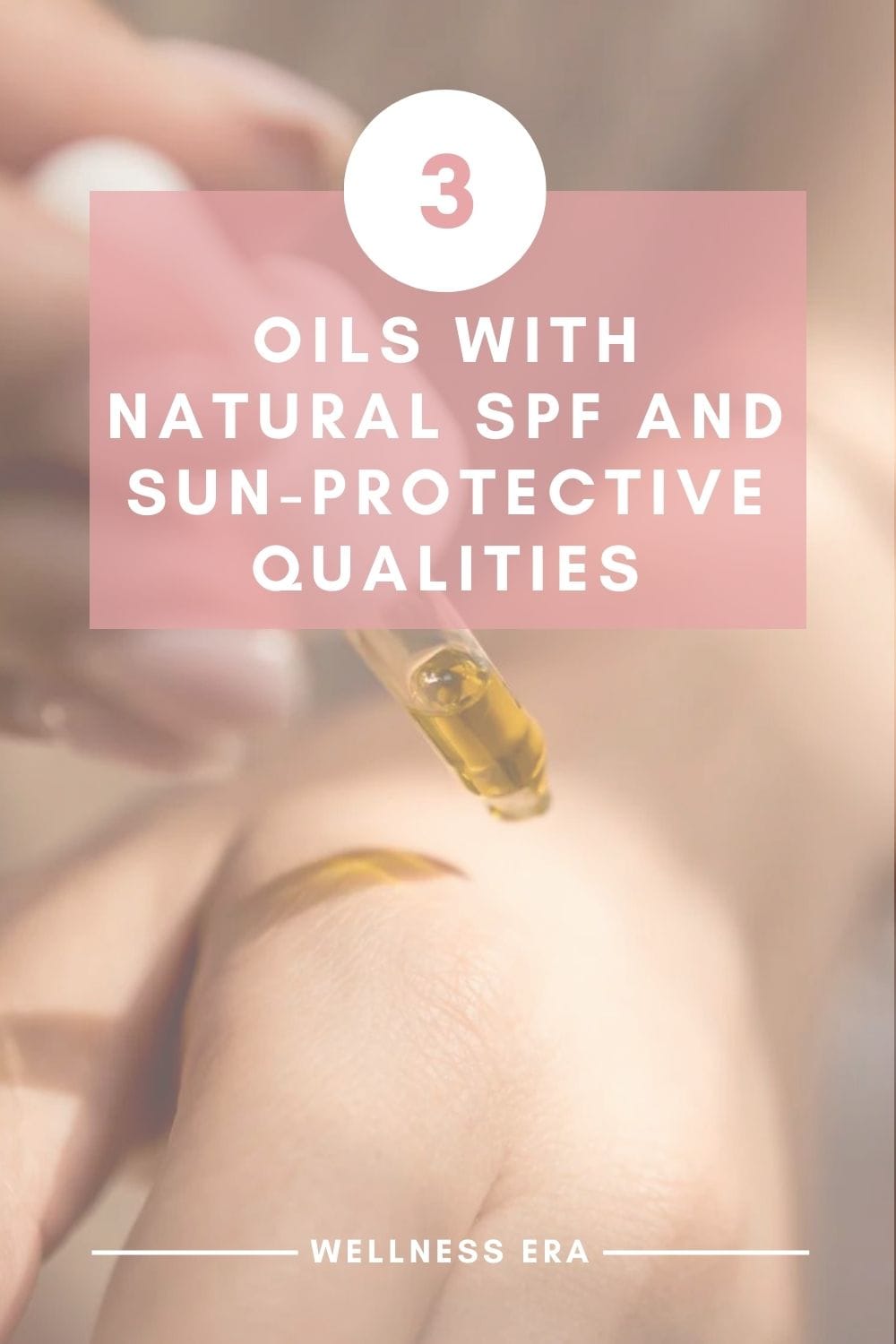
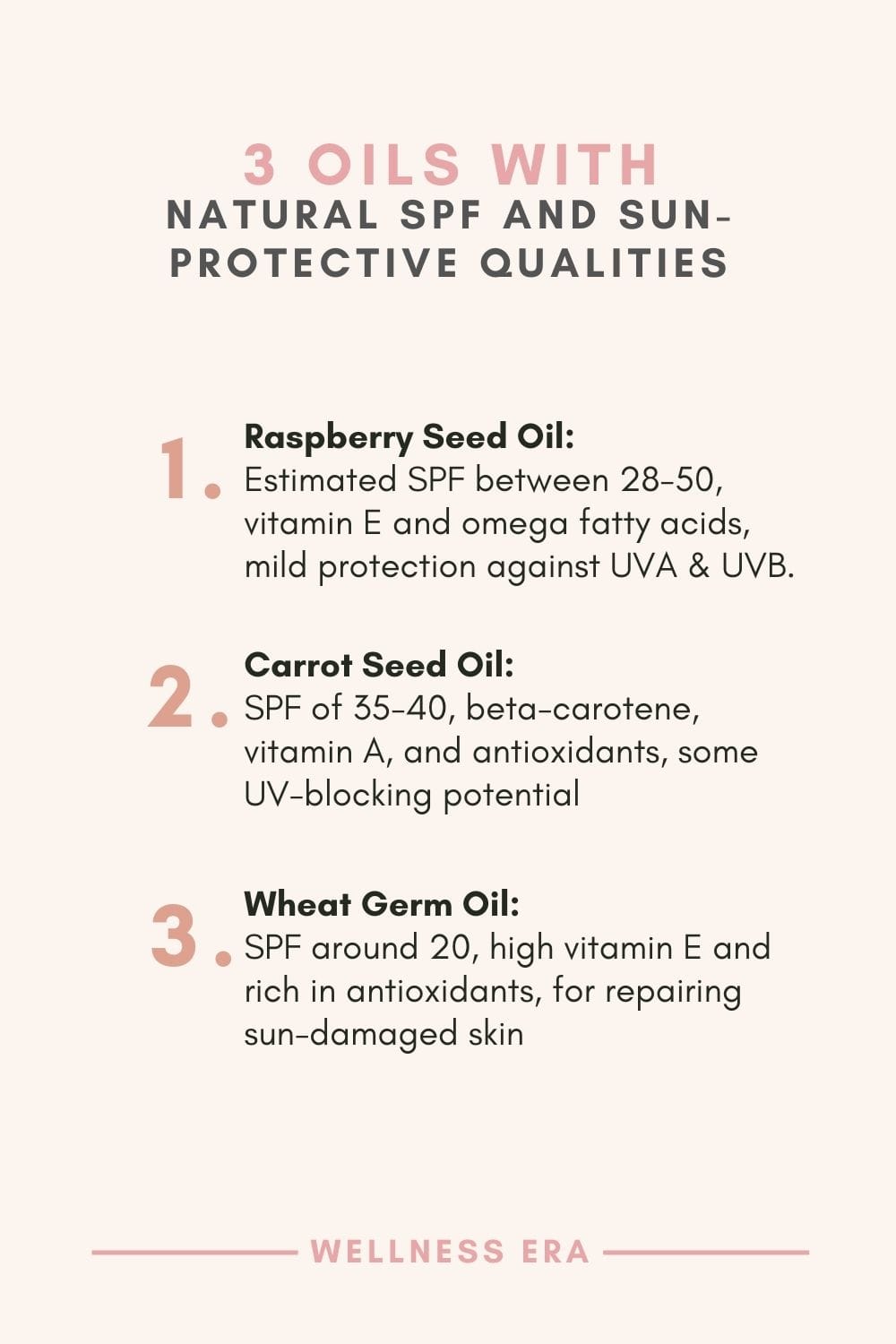
Important Considerations
Low and Inconsistent SPF Levels: SPF ratings for natural oils are often low and vary, so they should not be considered replacements for broad-spectrum sunscreen.
Layering with Sunscreen: These oils can enhance sun protection when layered under a mineral sunscreen. Their antioxidant benefits are especially valuable for preventing photoaging (Jasicka-Misiak et al., 2018).
Patch Testing for Sensitivity: Certain oils, like carrot seed oil, may be too strong for sensitive skin. Always perform a patch test to ensure compatibility.
Incorporating oils like raspberry seed oil, carrot seed oil, and wheat germ oil can provide antioxidant support and a mild SPF boost as part of a daily skincare routine. However, for effective and safe UV protection, these oils should be paired with a broad-spectrum sunscreen.
Protect Skin from Environmental Damage
While the sun is a significant source of skin damage, environmental factors like pollution and free radicals also contribute to aging. Pollution particles, smoke, and toxins in the air generate free radicals, which attack skin cells and break down collagen and elastin, leading to wrinkles, dullness, and sagging. So remember to protect your skin from environmental stressors naturally.
Environmental stressors can trigger inflammation, leaving skin dull and sensitive.Learn natural ways to reduce inflammation and promote smoother, healthier skin.
Use Antioxidants
Antioxidants are crucial for defending your skin against the oxidative damage caused by pollution and free radicals. Ingredients like vitamin C, vitamin E, and green tea extract can neutralize these free radicals, preventing them from damaging your skin’s structure and causing premature aging. Using skincare products that are rich in antioxidants, or incorporating antioxidant-rich foods into your diet, can help your skin stay youthful and healthy (Alam et al., 2017).
Want to maximize the benefits of antioxidants? Supporting healthy blood circulation ensures these nutrients reach deep into your skin for a vibrant, youthful glow. Explore natural ways to improve blood circulation and enhance your skin’s radiance.
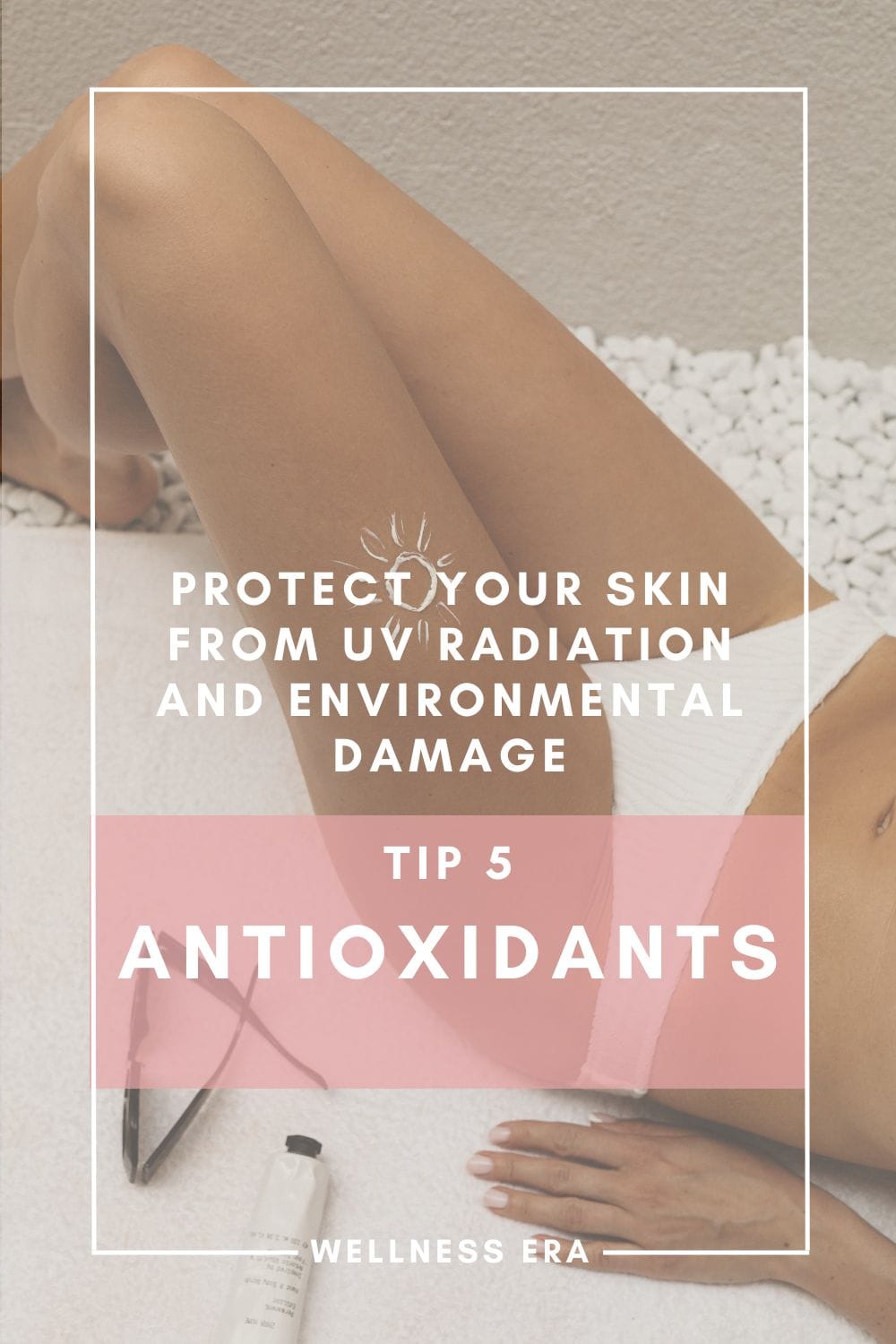
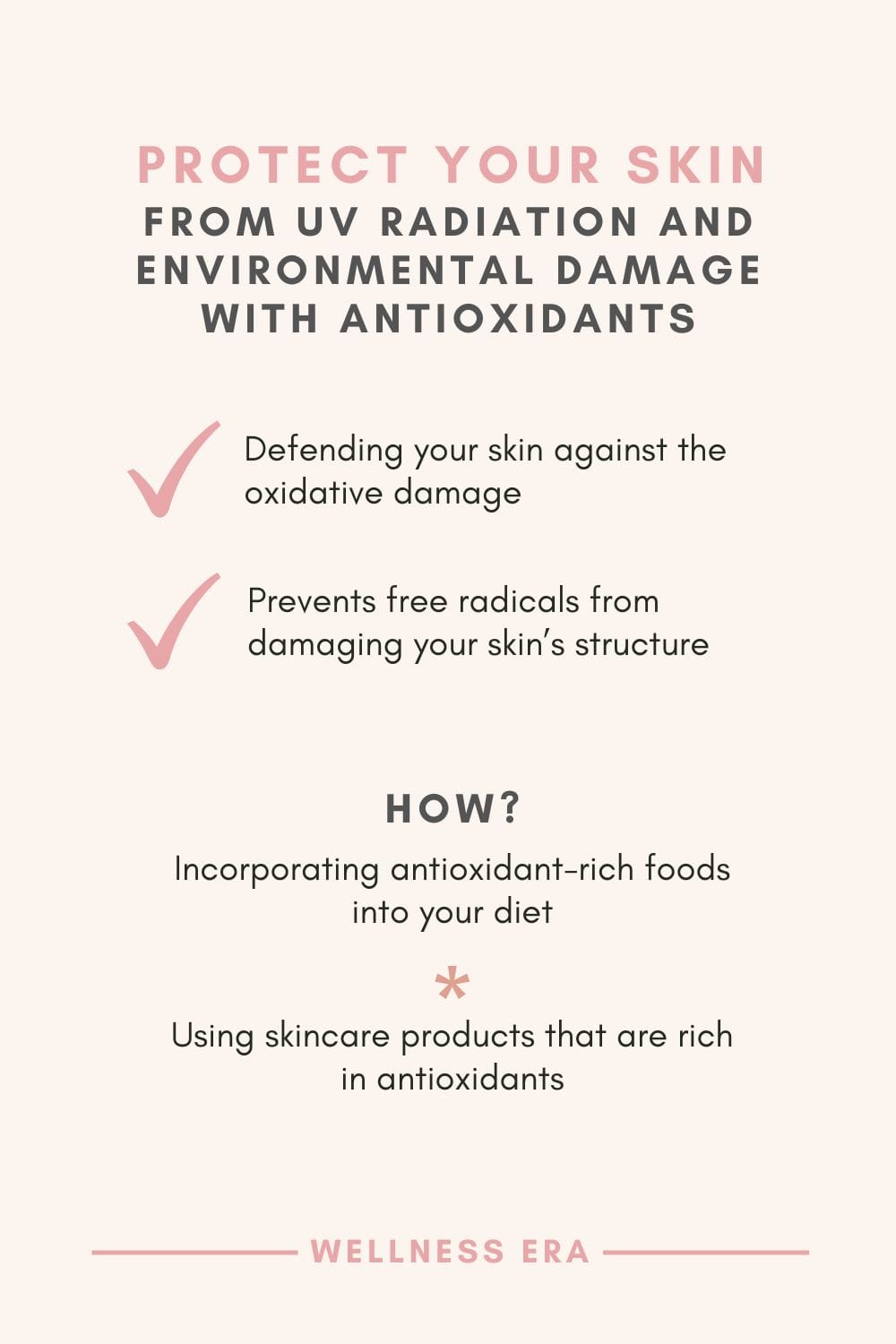
Protecting Your Skin from UV Radiation and Environmental Damage
Protecting your skin from the sun and environmental pollutants is essential for maintaining youthful skin. Natural sunscreens with zinc oxide or titanium dioxide offer safe, effective UV protection, while wide-brimmed hats and natural fabrics like linen and hemp provide additional barriers. By integrating antioxidants and sun-protective practices into your daily routine, you can shield your skin from damage and promote long-lasting radiance.
References
Alam, M., Voravutinon, J., Yoo, S.S. (2017). The role of antioxidants in the prevention and treatment of skin aging. Journal of Clinical and Aesthetic Dermatology, 10(9), 38-44.
Dweck, A.C. (2000). Carrot Seed Oil - A Natural Source of Carotene and Antioxidants. International Journal of Cosmetic Science, 22(5), pp. 347-355. URL
Gies, P., Roy, C., Udelhofen, M. (2009). Protection factors of hats in shade: An update on protective clothing in the real world. Journal of Photochemistry and Photobiology B: Biology, 96(2), 103-110. URL
Jasicka-Misiak, I., Makowczyńska, J., and Kafarski, P. (2018). Antioxidant Properties and UV Protection in Natural Oils. Journal of Applied Cosmetic Science, 12(1), pp. 37-45. Wiley
Kaur, C., & Saraf, S. (2011). Natural Sunscreens: An Overview. Journal of Cosmetic and Laser Therapy, 13(1), pp. 46-55. Taylor & Francis
Korać, R.R., & Khambholja, K.M. (2011). Potential of Herbs in Skin Protection from Ultraviolet Radiation. Pharmacognosy Reviews, 5(10), pp. 164-173. URL
O’Hagan, J.B., Khazova, M., & Price, L.L. (2016). UV radiation exposure for a group of outdoor workers in the UK: Effects of measure to reduce exposure. British Journal of Dermatology, 175(5), 1319-1330. Oxford Academic
Oomah, B.D., Ladet, S., Godfrey, D.V., Liang, J., & Girard, B. (2000). Characteristics of Raspberry (Rubus idaeus L.) Seed Oil. Food Chemistry, 69(2), pp. 187-193. ACS Publications
Petersen, B., & Wulf, H.C. (2014). Application of sunscreen—Theory and reality. Photodermatology, Photoimmunology & Photomedicine, 30(2-3), 96-101. PubMed
Schalka, S., Reis, V.M.S., & Cucé, L.C. (2009). The influence of the amount of sunscreen applied and its sun protection factor (SPF): evaluation of two sunscreens including the same ingredients at different concentrations. Photodermatology, Photoimmunology & Photomedicine, 25(4), 175-180. URL: Pubmed
Whiteman, D.C., Green, A.C., & Olsen, C.M. (2016). The growing burden of invasive melanoma: projections of incidence rates and numbers of new cases in six susceptible populations through 2031. Journal of Investigative Dermatology, 136(6), 1161-1171. URL: Pubmed
Here is something you might also like..
Would you like to receive something special?
Try out the best, inspirational weekly newsletter for your natural wellness era!
My Wellness Era Weekly
SUBSCRIBE TO OUR NEWSLETTER
Your Weekly Dose of Natural Wellness
Fill out the form below, and you will reveice "My Wellness Era Weekly" delivered to your inbox.
What you can expect: a short, warm, and personal note from our founder. Mindset shifts, journal prompts, or self-care reminders. Inspiring quotea related to wellness, mindfulness, or self-love. Small, actionable wellness habits you can try. Recomendations we love, are testing, or recently discovered. Highlights of our latest blog posts.
+++ What we’re loving every single week.
QUICK LINKS
SOCIAL
CATEGORIES



